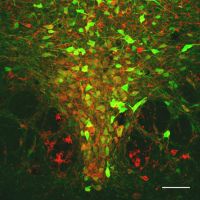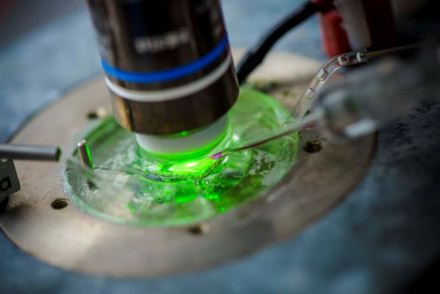Serotonin (5-HT)
Serotonin (5-hydroxytryptamine; 5-HT) has been shown to modulate emotional behavior and alterations in 5-HT levels have been related to different disease states including anxiety disorders and depression. Our research focuses on how changes in serotonergic signaling contribute to the development and manifestation of anxiety and depression. We are in particular interested in understanding the autoregulation of the serotonergic system itself which is mainly mediated by 5-HT1 receptors, which are G-protein coupled receptors (GPCRs). Alterations in the 5-HT1 signaling pathways have been suggested to be responsible in the manifestation of psychiatric disorders. Additionally, these GPCRs are also found in non-serotonergic neurons of the central nervous system (CNS), were they modulate neuronal activity postsynaptically (Heteroregulation). To date it is not clear how heteroreceptors influence the manifestation and progression of psychiatric diseases.
OPTOGENETICS
Up to date methods to modulate these intracellular signaling pathways with high temporal and spatial resolution are missing. A new method called optogenetics has recently revolutionized neuroscience research and is based on the idea to activate neuronal activity and signaling pathways by light. Based on this idea, We have used different opsins to specifically activate intracellular signaling pathways with high temporal and spatial precision. We developed serotonergic receptors (5-HT1), which allow the activation of the same intracellular signaling pathways as native serotonergic receptors by light.
Combinatorial or independent light-activation of the chimeric 5-HT1 auto- and heteroreceptors are used to control anxiety and depressive phenotypes in wild-type and 5-HT1 knock-out mice to understand the influence of GPCR signaling pathways in these disease states. With these new optogenetic tools we would like to understand in which way serotonergic signaling pathways mediate anxiety and depression. Hopefully,our research will help to find new therapeutic strategies to treat these diseases in the future.




